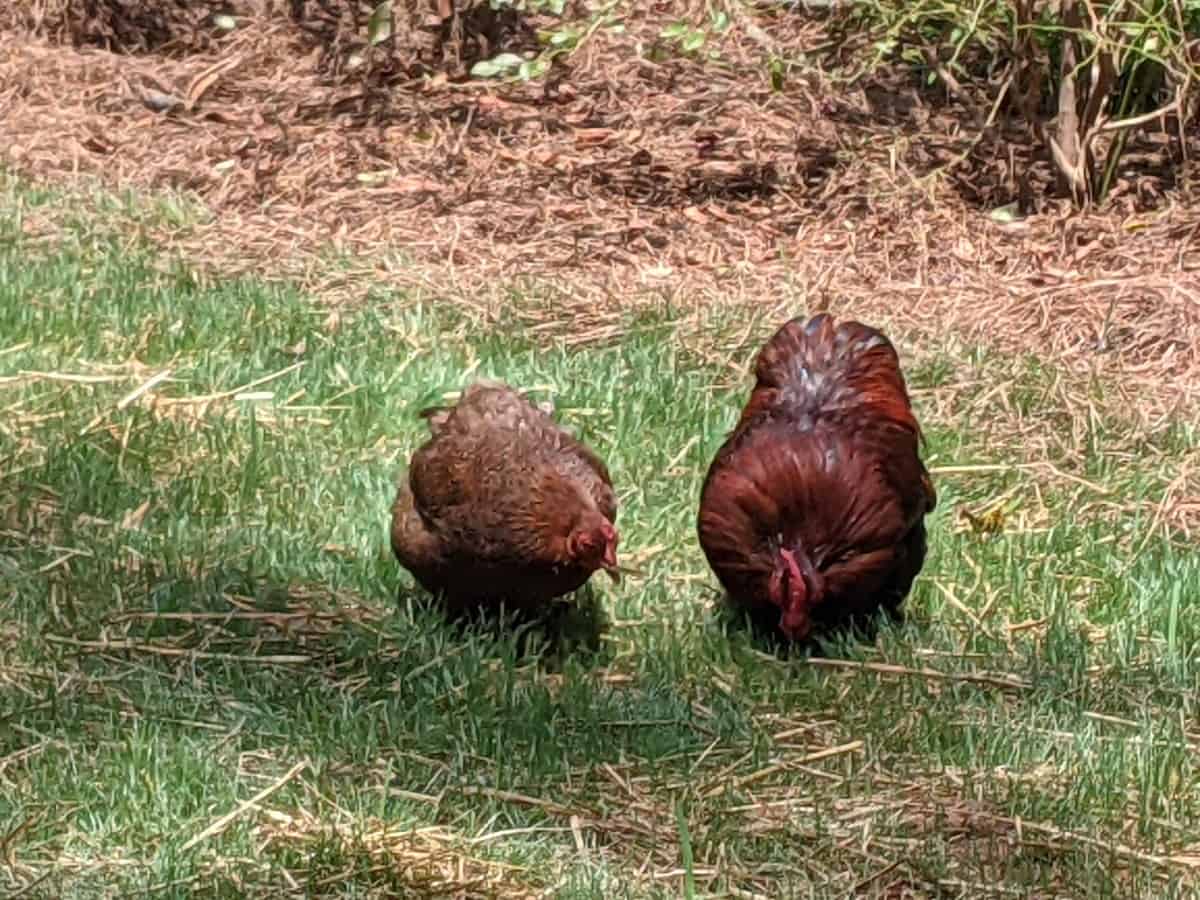The word “bantam” refers to a small variety of fowl. Bantam chickens are charming chickens to have in your backyard. Bantams are docile chickens with friendly, curious natures and prominent personalities.
Bantams start laying eggs at 22-28 weeks old. Bantam eggs are one-third to half the size smaller than regular chicken eggs, but they taste the same as regular chicken eggs. Easter egger, Dutch, Brahma, Sussex, and Cochin are the best egg layers, laying between 200 and 300 eggs a year.
Bantams are excellent layers. Their eggs are much smaller than store-bought eggs, but they taste a whole lot better! Bantams are great with kids and lovely pets to have. My daughter has a great time playing with our hens and feeding them treats.
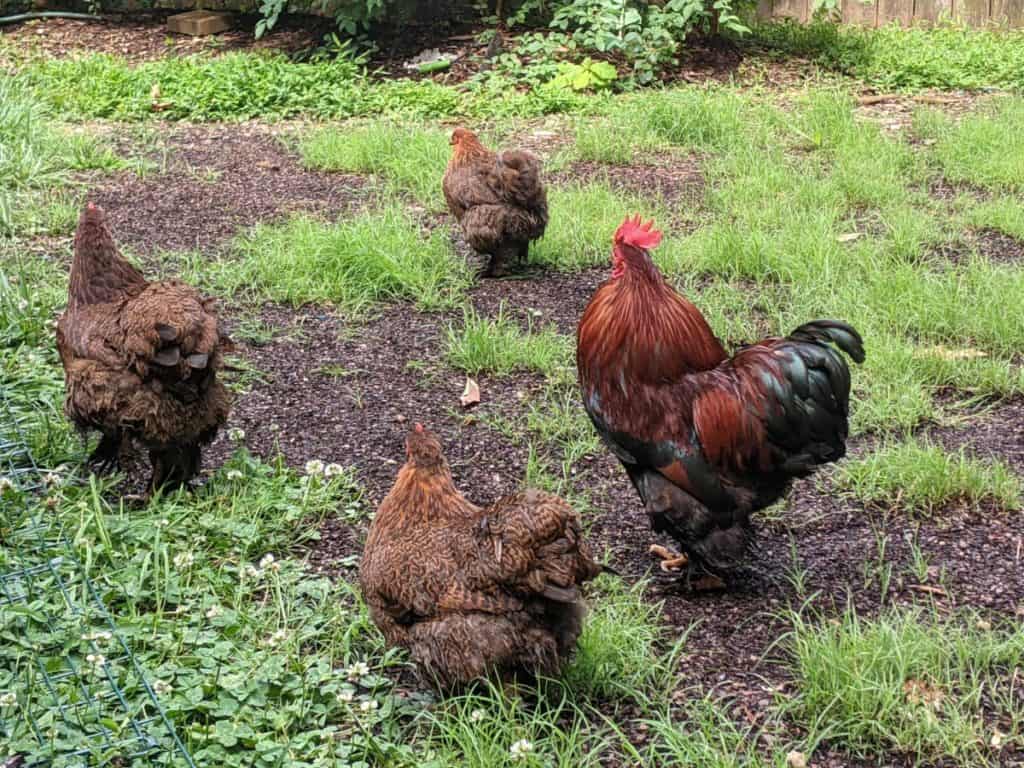
What is the Difference Between Bantams and Chickens?
Bantams and traditional chickens are both chickens. However, bantams are one-third to half the size of a standard chicken and lay smaller eggs.
There are two types of bantams:
True bantams– true bantams only come in one size (small). True bantams do not have a large counterpart, and they naturally occur without human interference. They are 100% natural.
Miniature bantams– miniature bantams do not naturally occur. Humans selectively bred these fowls to make a smaller, miniature version of regular fowls.
How Big do Bantams Get?
The size of your bantam will depend on the breed. Bantams typically grow between 8 to 12 inches tall and weigh 1 to 3 lbs. The size differs depending on the breed and diet of each bantam chicken.
Seramas are the smallest bantams, growing between 6 and 8 inches tall and weighing 0.45 to 1.3 lbs.
How Long do Bantams Live for?
Bantams usually live between 4 to 8 years old. However, many bantams live far beyond 10 years old if they are well cared for.
What are Bantams Used for?
Bantams usually have an amiable nature with prominent personalities, making them ideal pets. Bantams can also be kept for their eggs even though they are much smaller than regular eggs. Bantam chickens are great for backyard flocks, especially in urban areas where space is limited.
This is why I have Bantam Cochins as my current flock.
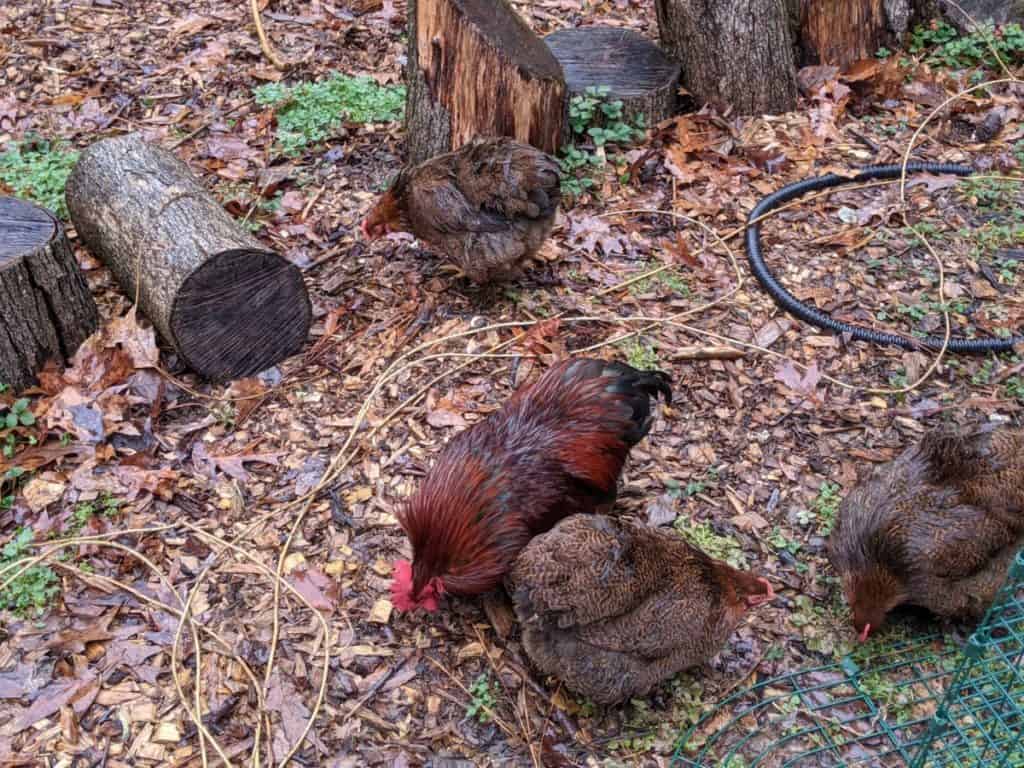
Different Kinds of Bantams Explored
Cochin bantams
Cochin bantams have prominent personalities that make up for their stature; they weigh about two pounds. Cochins are very friendly and love cuddles. They have feathery feet and bright eyes. This is the breed I currently have and my daughter loves playing with our flock each day.
She is scared of the rooster, however, he earned his keep after fending off a hawk attack recently.
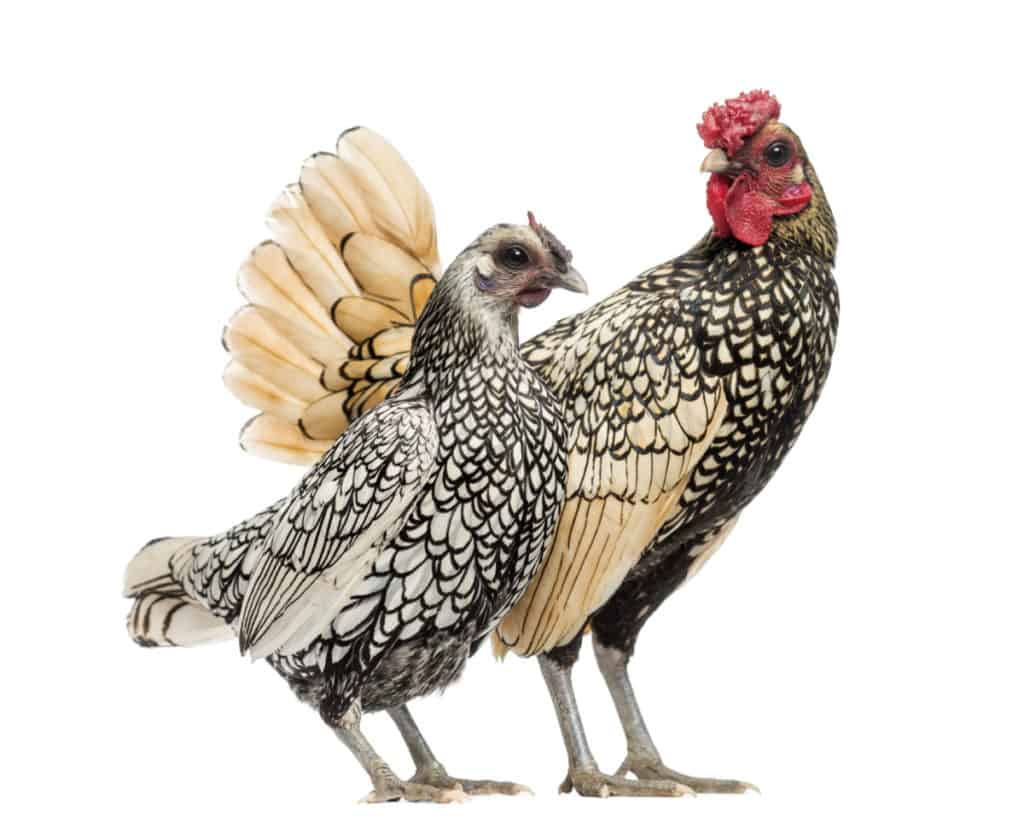
Sebright Bantam
Sebright bantams are a popular British ornamental breed adored for their beauty. They come in two laced colors of silver or gold; the silver-laced Sebright is especially popular. Sebright’s are true bantams breed, with laced feathers and rosy red combs. Sebright’s are petite chickens weighing less than two pounds.
Sebright bantams are challenging to breed. Many males are infertile, and their hens lay few eggs.
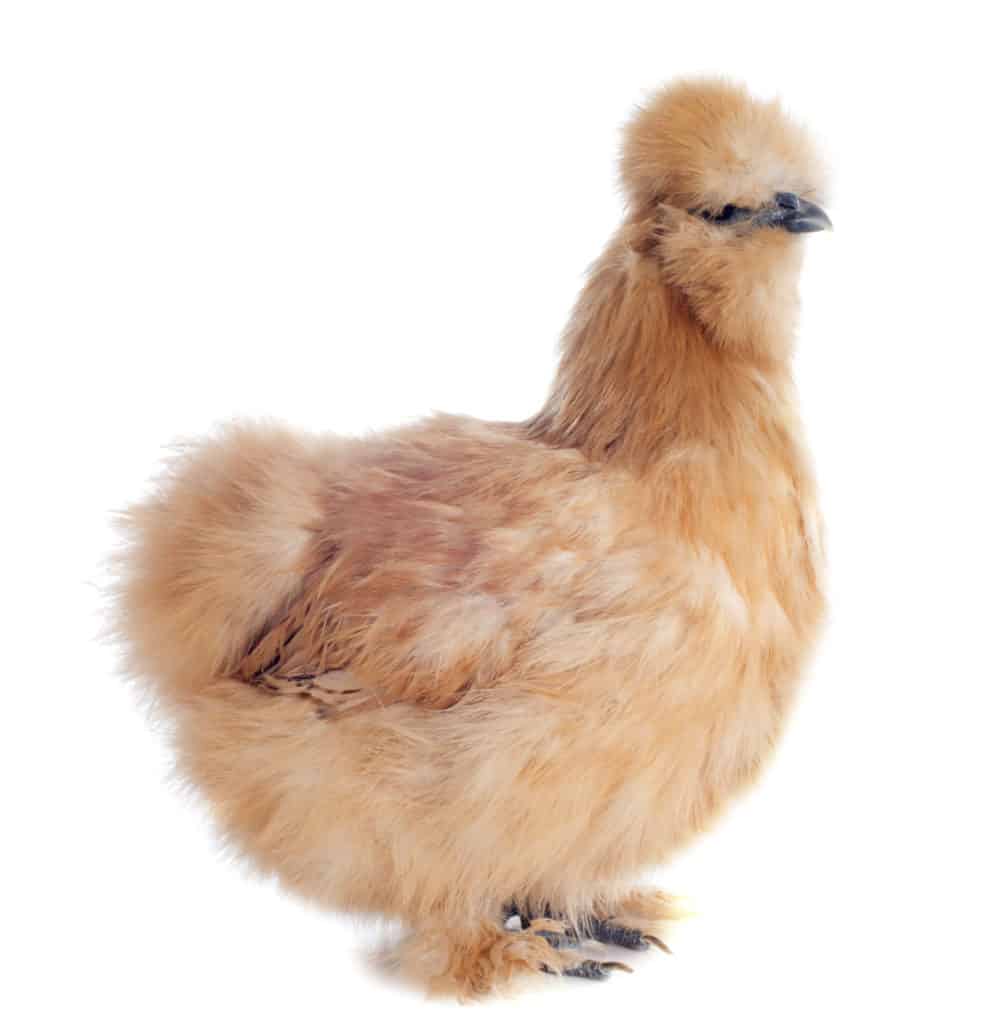
Silkie Bantam
Silkie Bantams are the most well-known and beloved bantam breeds out there! Silkie Bantams are friendly, curious, and hardy. They tolerate being held and can be pretty playful; they make a wonderful family pet.
Silkie bantams have feathers that resemble down. Unfortunately, they cannot keep themselves very warm, so make sure to keep an eye on them on cold winter days.
Silky bantam hens tend to be excellent mothers. They are consistently broody!
Belgian Bantam
Belgian bantams are true bantams; they are a rare chicken breed that originates from Belgium. Belgian bantams are very friendly and come in various lovely hues; they are a great addition to a flock. However, keep in mind that Belgian bantams are good fliers, so you need to ensure a safely enclosed coop run, so they don’t wander off.

Pekin Bantam
Pekin bantams originated in China. Pekin bantams are docile and friendly fouls, and like a lot of other bantam varieties, it has fluffy, feathered feet! The hens tend to go broody quickly, although they only lay approximately 80 eggs per year.

Dutch Bantam
Dutch Bantams are lovely little chickens mostly kept as ornamental chickens. They tend to be highly strung and a little jumpy. These jittery come in a few different varieties, including partridge, black, blue, silver, lavender, and a few more.
Dutchman bantams aren’t as friendly and tend to become flighty if they aren’t handled regularly.

Sussex Bantam
The Sussex bantam is a docile and tolerant foul, making it an excellent breed for families. Sussex bantams have medium longs tails and broad chests. They come in various colors, including speckles, buff, coronation, light, brown, red, silver, and white.

Japanese Bantam
Japanese bantams are regarded as the easiest bantam breeds to keep. They have the shortest legs of all bantams; their short legs are a required trait for Japanese bantams. In addition, Japanese bantams’ wings angle down instead of horizontal like most of the other chickens.
Japanese bantams tend to look shy, but their looks belie their mischievous, fun personalities. They vary in color varieties of partridge, black, lavender, and red. They also come with frizzle and silkie variations.
Brahma Bantam
Brahma bantams are known for their sweet and friendly nature and their tolerance to cold weather conditions. Brahma bantams are not true bantam; there is a full-size variety. Brahma bantams are gentle chickens; they are a perfect urban flock chicken that ranges in various color combinations like light, dark, black, white, and buff.
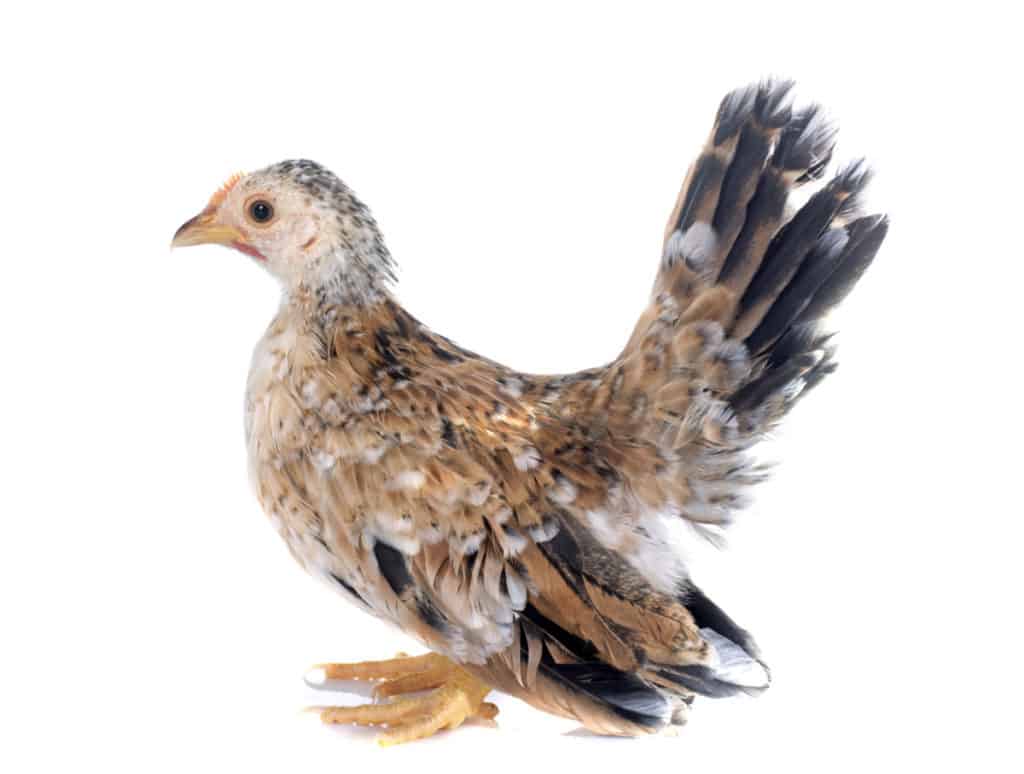
Serama Bantam
Serama Bantams are a true bantam originating in Malaysia. Serama Bantams are the worlds smallest chicken breed. They are well known for their small stature, straight-up stance, puffed-out chests, vertical wings, and straight tails.
Easter Egger
Easter Egger bantams aren’t true bantam chickens; they are miniature versions of the full-size variety. Easter eggers are hybrids with distinctive beards and muffs, but they are famous for their eggs that vary in color (blue, green, pink, or brown).
Belgian Bearded d’Uccle
Belgian Bearded d’Uccle is adorable, true bantam chickens with the sweetest temperament; they are very friendly and great for kids. They are unique bantams with fluffy feather boots, beards, and tufts- giving them a cuddly appearance. They come in a wide variety, including mottled, porcelain, Mille Fleur, cuckoo, blue, lavender, black, and white.
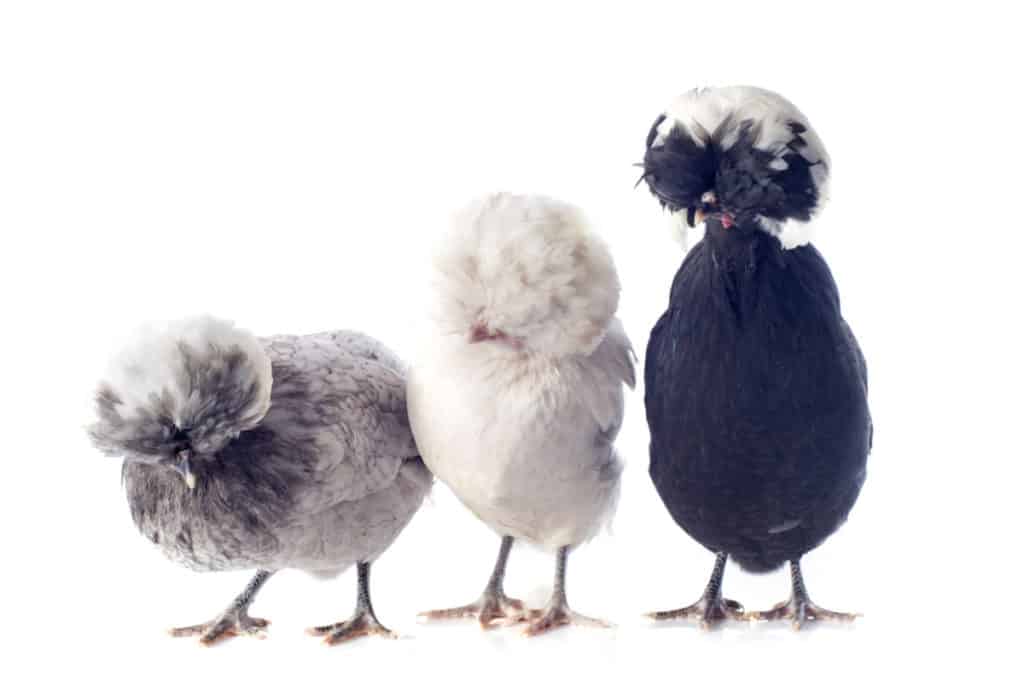
Polish Bantams
Polish Bantams are ornamental chickens that are friendly and cuddly. Polish bantams have pompon-like feathers that crown their head, resembling a Dr. Seuss character!
Polish bantams come in a wide range of colors, including white-crested, silver-laced, golden-laced, buff, and black.

Are Bantams Good for Laying Eggs?
Like all types of chickens- some are, and some aren’t. Many bantam breeds often become broody, temporarily ceasing their laying. The best egg-laying bantams lay a minimum of 200 eggs per year. Most bantam eggs are a third to half the size small than full-sized chicken eggs.
I have six Bantam Cochins and they lay eggs each day except during the colder winter months. Several of them often go broody as well which is common with the breed. There are ways to reduce this so it’s not a big issue for me.
At What Age do Bantams Lay Eggs?
Bantam chickens typically start to lay eggs around 22-28 weeks old. The exact age differs from breed; it typically depends on the type of bantam you have. However, environmental factors can also influence when they start laying eggs.
For example, it is unlikely for bantams raised late in summer to begin laying eggs before the following spring.
Which Bantams are Best for Laying Eggs?
- Easter egger (300 eggs)
- Sussex (220+ eggs)
- Cochin (200+ eggs)
- Brahma (200 eggs)
- Dutch (200 eggs)

Can you Eat Bantam Eggs?
Bantam eggs are approximately a third of a regular chicken egg. The yolk to white ratio is a lot higher in bantam eggs than regular chicken eggs. Bantam eggs have almost as much yolk as other chicken eggs but a lot less white.
Taste-wise- bantam eggs are rich and delicious! I eat several each week! However, you may need two or three to make up for one regular chicken egg. So make sure and adjust accordingly if you are using them for cake batter or other recipes.
Table Comparing Different Bantam Chickens
A true bantam has no large chicken counterpart.
| BANTAM BREED | TRUE BANTAM? | MATURE WEIGHT | EGGS LAID PER YEAR | COLOR OF EGGS | FAMILY-FRIENDLY |
| Sebright | YES | 1.1 to1.4 lbs | 80 | White | YES (Roosters may cause issues with small children) |
| Silkie | YES | 1.8 to 2.2 lbs | 100 | Cream | YES |
| Belgian | YES | 1.4 to 1.6 lbs | 150 | Off White | YES |
| Pekin | NO | 1.3 to 1.5 lbs | 80 | Cream | YES |
| Dutch | YES | 0.8 to 1.2 lbs | 200 | Cream | YES (Must be handled often) |
| Bantam Cochin | NO | 2 to 3 lbs | 200+ | Brown | YES (Roosters can be aggresive) |
| Japanese bantam | YES | 1.2 to 2 lbs | 50 | Cream | YES |
| Brahma | NO | 2 to 2.2 lbs | 200+ | Brown | YES |
| Serama | YES | 0.45 to1.3 lbs | 160 | Cream | YES |
| D’Uccle | YES | 0.9 to 1.3 lbs | 200 | Cream | YES |
| Polish | YES | 1.6 to 1.8 lbs | 150 | Cream | YES |
| Easter Egger | NO | 1.5 to 1.6 lbs | 300 | Brown, pink, green, blue | YES |
| Sussex bantam | NO | 2 to 4 lbs | 220+ | Brown | YES |
Are Bantams Good Backyard Breeds?
Bantams are a great ornamental addition to your backyard! They deliver free eggs and provide free chicken manure to your backyard and compost pile. They also are great at eating insects and reducing the insect population in your backyard.
Bantams require less space than regular chickens and eat a lot less food, making them budget-friendly too.
Conclusion
Bantams are basically miniature versions of chickens. Bantams are very friendly and adapt well to most backyard settings. If you have limited space choosing a Bantam breed is a good option. They make wonderful family pets and are good egg layers.
Although most bantam chickens can’t compete with the bigger breeds for the number of eggs laid, most bantams still produce a reasonably good number of rich, fine-tasting eggs.

